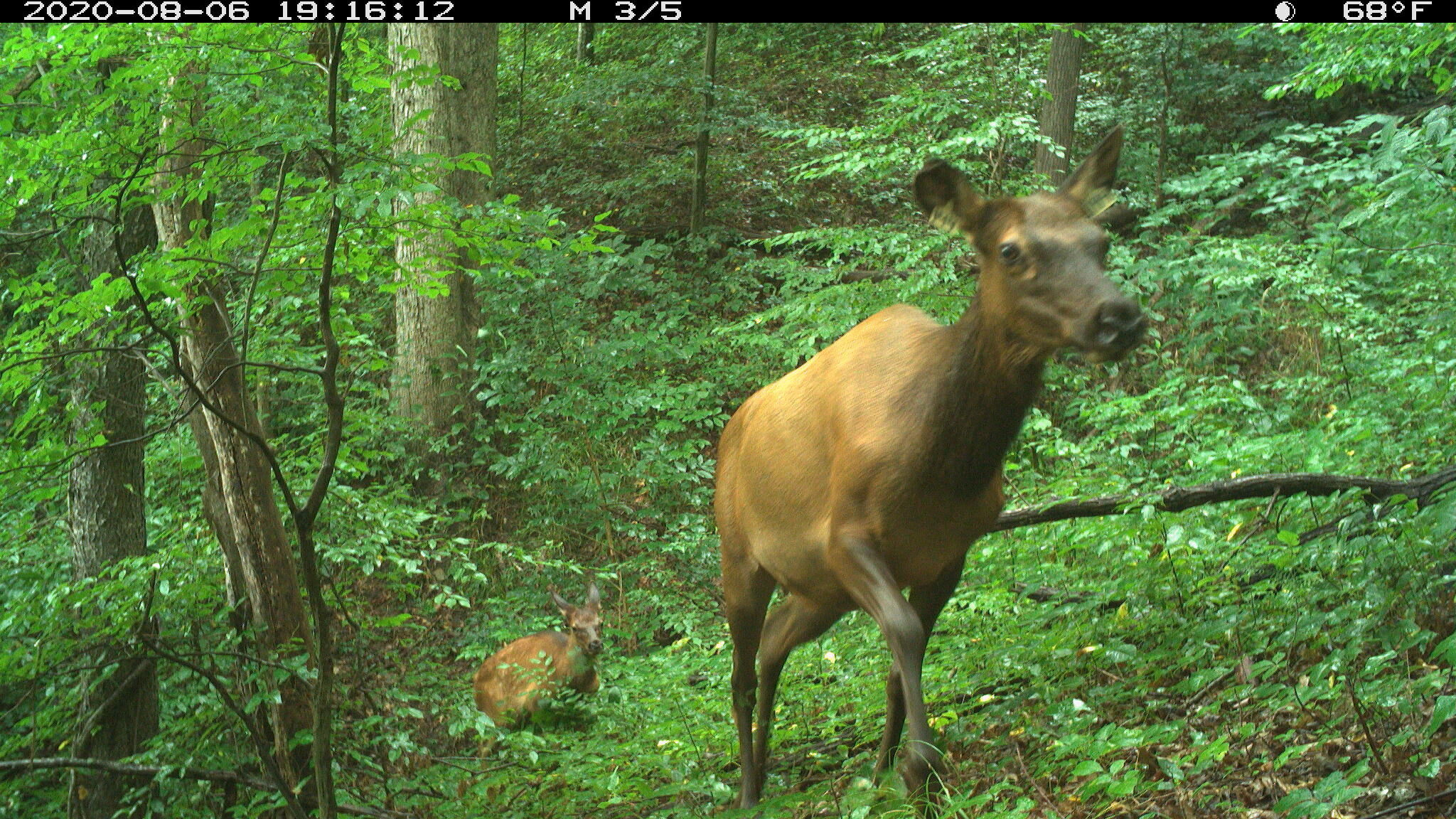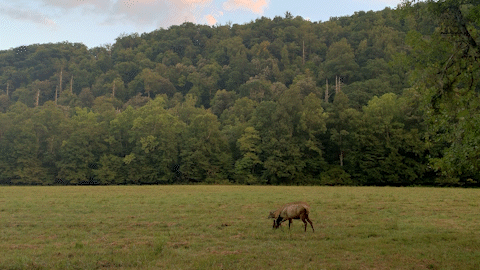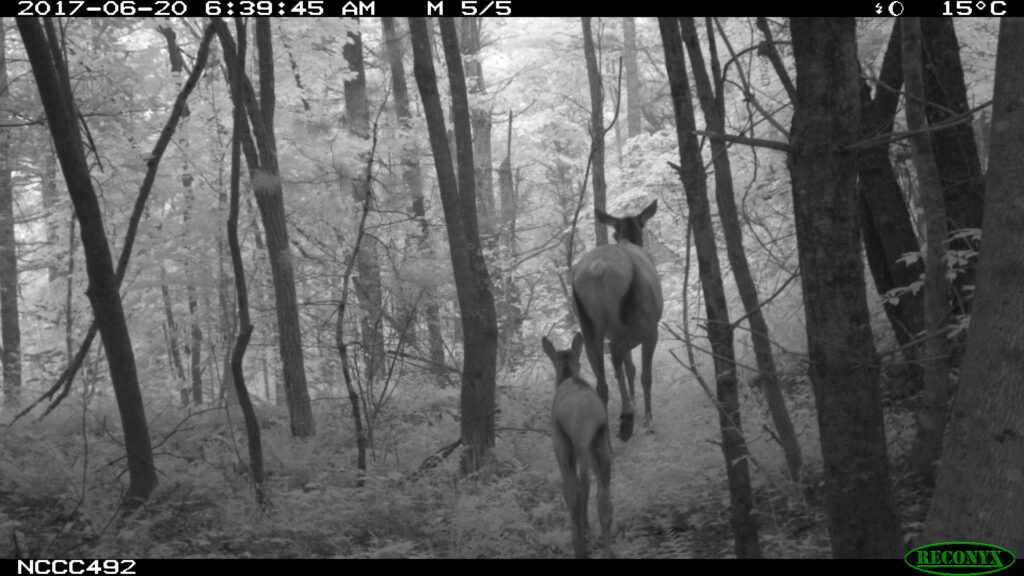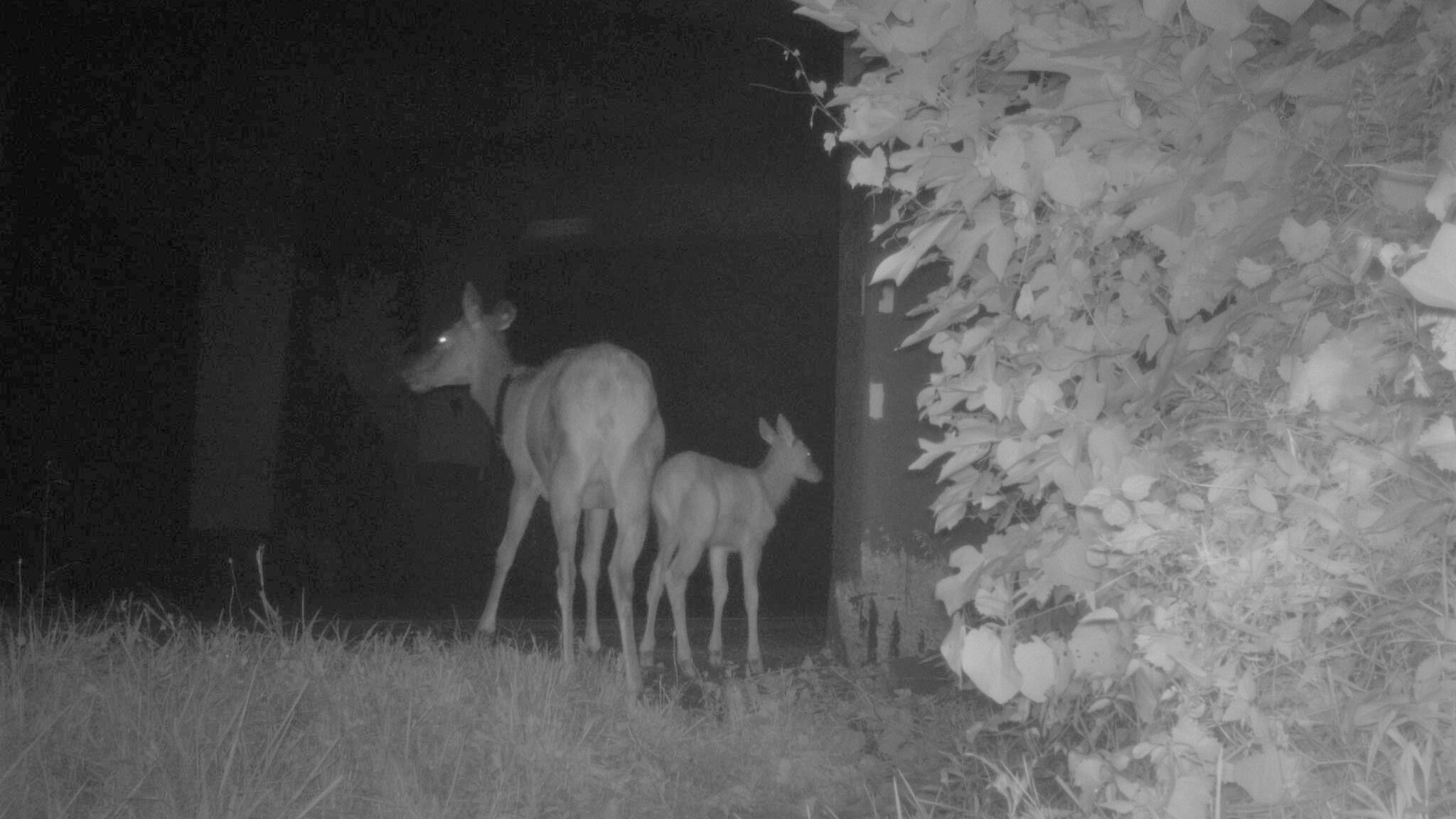



Elk 30216 and her calves throughout the years. During Safe Passage’s road ecology research in the Pigeon River Gorge, GPS collars revealed multiple years of one mother elk’s journey to and from her calving area.
While the elk population in and around Great Smoky Mountains National Park does not migrate, they do make some relatively longer seasonal movements. In these spring months, pregnant females will move away from their herd to give birth in isolated areas. Cows usually carry one calf and give birth in late May through June. In late summer when the calf is large enough, the pair will rejoin their herd, just in time for the rut (mating season) that occurs in late September through early October.
During our road ecology research in the Pigeon River Gorge, elk monitoring with GPS collars revealed multiple years of one elk’s journey to access her calving area. In both years of monitoring, she left the Cataloochee Valley in early spring and crossed the interstate to access her calving area north of the roadway.
In late summer, the cow and her calf would begin their journey back to the park, again having to navigate crossing I-40. In the two years of monitoring, this elk crossed I-40 107 times, with the majority of those crossings occurring at the Tennessee–North Carolina state border, where the Appalachian Trail crosses under the interstate via a road bridge, and also across a road surface just north of that area.
In the map to the right, you can see her many crossings throughout the years — which she made both with and without her calves in tow, depending on the time of year. Each dot on the map represents the hourly location of this particular elk, Elk 30216.
— Liz Hillard, Safe Passage Co-Research Lead

